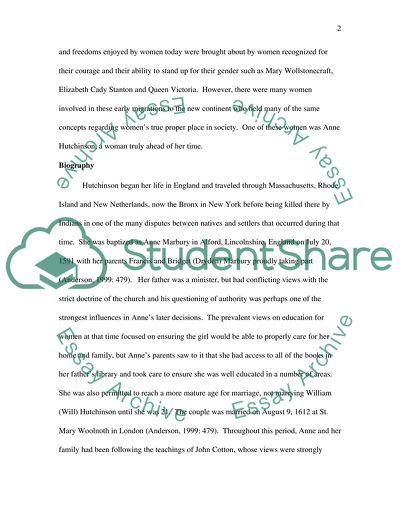Cite this document
(Anne Hutchinson's Life Research Paper Example | Topics and Well Written Essays - 3750 words, n.d.)
Anne Hutchinson's Life Research Paper Example | Topics and Well Written Essays - 3750 words. Retrieved from https://studentshare.org/biographies/1722841-anne-hutchinson-ahead-of-her-time
Anne Hutchinson's Life Research Paper Example | Topics and Well Written Essays - 3750 words. Retrieved from https://studentshare.org/biographies/1722841-anne-hutchinson-ahead-of-her-time
(Anne Hutchinson'S Life Research Paper Example | Topics and Well Written Essays - 3750 Words)
Anne Hutchinson'S Life Research Paper Example | Topics and Well Written Essays - 3750 Words. https://studentshare.org/biographies/1722841-anne-hutchinson-ahead-of-her-time.
Anne Hutchinson'S Life Research Paper Example | Topics and Well Written Essays - 3750 Words. https://studentshare.org/biographies/1722841-anne-hutchinson-ahead-of-her-time.
“Anne Hutchinson'S Life Research Paper Example | Topics and Well Written Essays - 3750 Words”, n.d. https://studentshare.org/biographies/1722841-anne-hutchinson-ahead-of-her-time.


